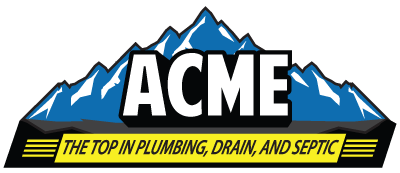From Tree Roots to Grease: Common Contributors to Sewer Line Backups and How to Avoid Them
Sewer line backups are among the most unpleasant plumbing issues a homeowner can face. They can cause significant damage to your property, pose health risks, and lead to costly repairs. Understanding the common contributors to sewer line backups and knowing how to prevent them can help you maintain a healthy plumbing system. Here, we explore the usual suspects behind sewer line backups and provide tips on how to avoid them.
Common Contributors to Sewer Line Backups
1. Tree Roots
Tree roots are one of the most common causes of sewer line blockages. Roots naturally seek out sources of water and nutrients, and your sewer lines are a prime target. Even the smallest crack in a pipe can attract roots, which can then grow and expand inside the pipe, leading to severe blockages.
2. Grease and Fat
Pouring grease and fat down your drains can create major blockages over time. When hot grease cools, it solidifies and adheres to the walls of your pipes. This buildup can restrict the flow of wastewater and eventually cause a backup.
3. Foreign Objects
Flushing inappropriate items down the toilet is a frequent cause of sewer line backups. Items such as wipes, sanitary products, paper towels, and even small toys can get stuck in the pipes and create a blockage.
4. Structural Issues
Older sewer lines made of clay or cast iron are more susceptible to cracks, breaks, and collapses. Structural issues can also arise from ground shifting or settling, causing misalignment or sagging of the pipes, which impedes the flow of wastewater.
5. Excessive Paper Usage
Using too much toilet paper or flushing large quantities at once can overwhelm your sewer line, particularly if there are already minor blockages or other issues present.
How to Avoid Sewer Line Backups
1. Regular Maintenance and Inspections
Regular maintenance and inspections by a professional plumbing service like ACME Plumbing can help identify and address potential problems before they become severe. A plumber can use video inspection tools to check the condition of your sewer lines and spot any signs of root intrusion, cracks, or buildup.
2. Be Mindful of What Goes Down the Drain
To prevent grease buildup, avoid pouring cooking fats, oils, or grease down your drains. Instead, collect them in a container and dispose of them in the trash. Similarly, only flush human waste and toilet paper down the toilet. Dispose of other items in the trash to avoid blockages.
3. Install Root Barriers
If tree roots are a known problem in your area, consider installing root barriers around your sewer lines. These barriers can help redirect roots away from your pipes and prevent intrusion. Additionally, regular root treatments can help keep roots at bay.
4. Use Drain Screens
Using drain screens in sinks and showers can help catch hair, food particles, and other debris before they enter your pipes. Clean these screens regularly to ensure they remain effective and prevent drain cleaning.
5. Implement Proper Landscaping
When planting trees or shrubs, be mindful of the location of your sewer lines. Avoid planting large trees with aggressive root systems near your sewer lines. Opt for smaller plants or those with less invasive roots.
6. Educate Your Household
Ensure that everyone in your household knows what can and cannot go down the drains and toilets. Educating family members about proper disposal practices can go a long way in preventing sewer line backups.
Sewer line backups are a major inconvenience, but with a proactive approach, they can be avoided. Understanding the common causes and implementing preventive measures can help you maintain a healthy plumbing system and avoid the stress and expense of dealing with backups. Regular maintenance, mindful disposal practices, and appropriate landscaping are key to keeping your sewer lines clear and functional. Taking these steps can save you from the headaches and costs associated with sewer line blockages.
